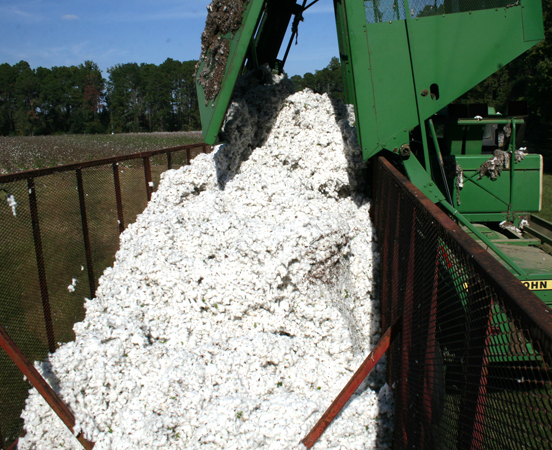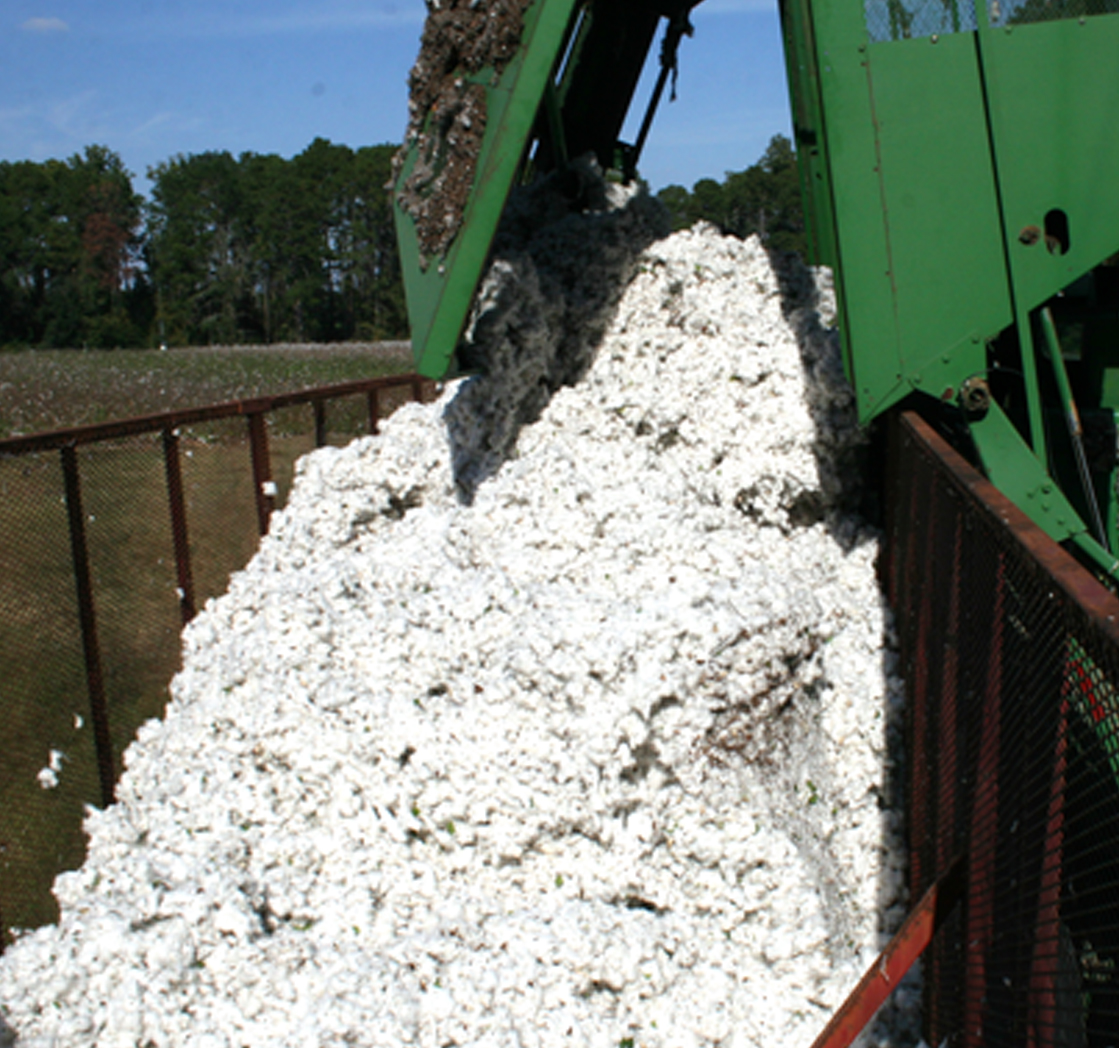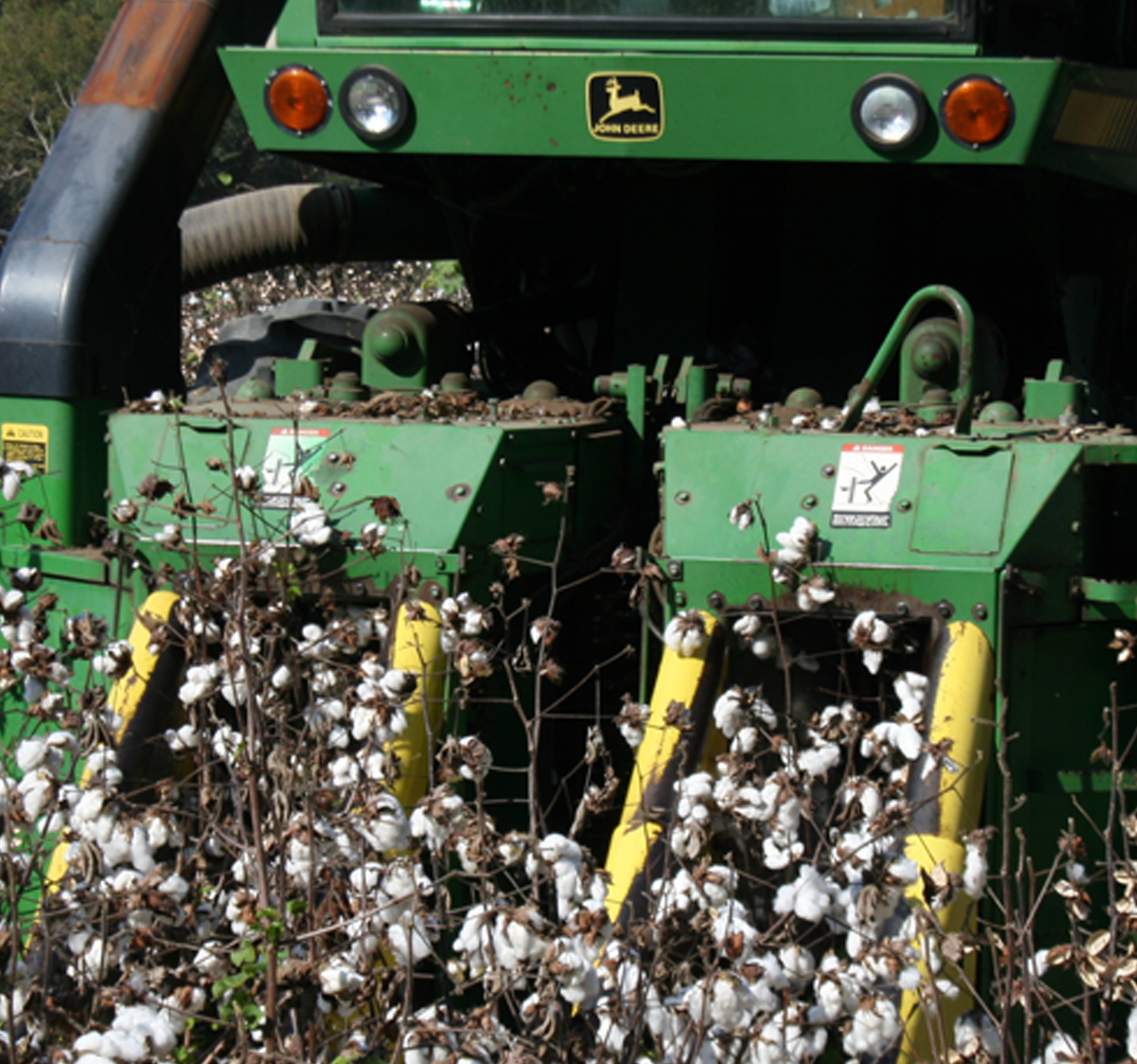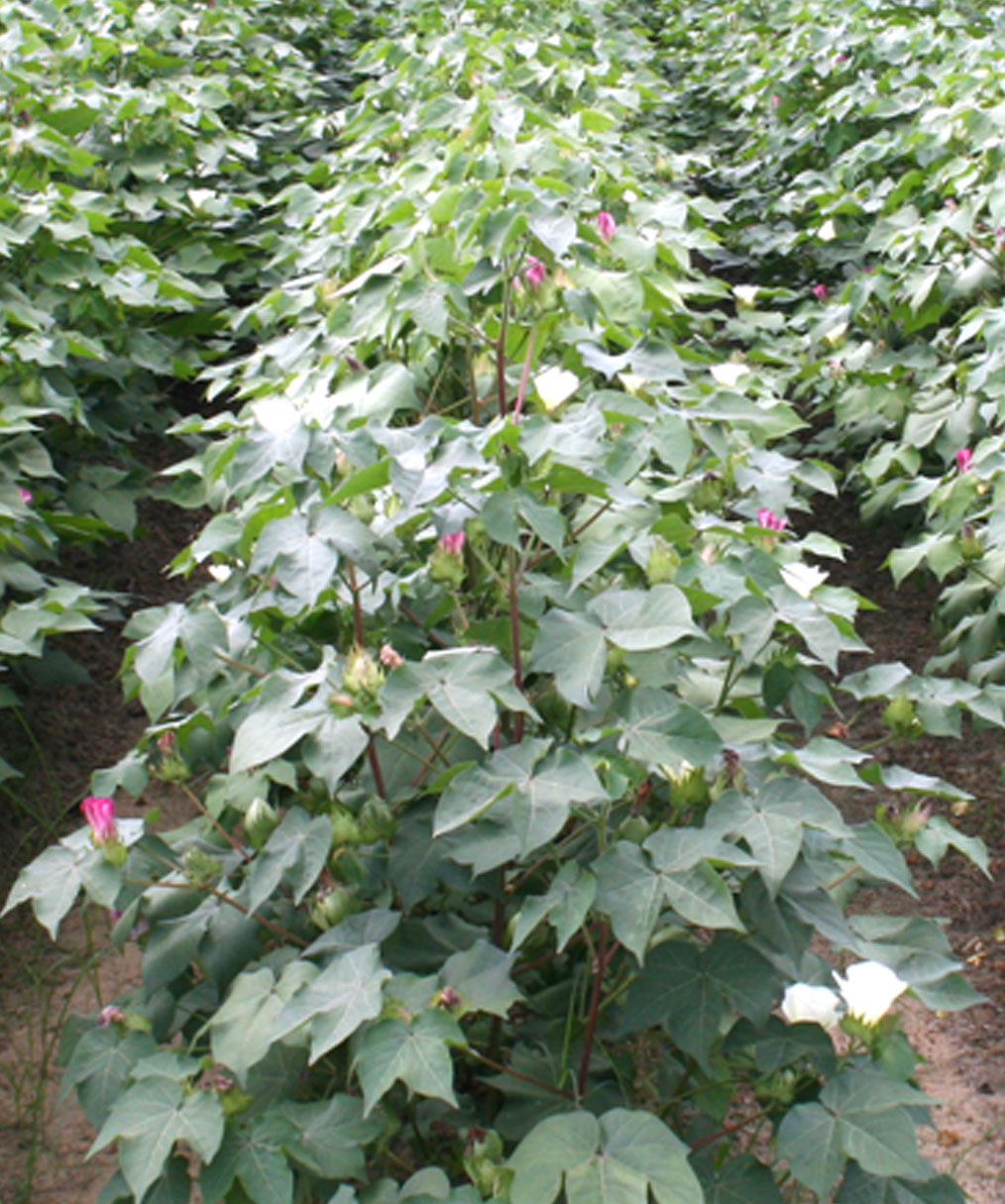With cotton prices plummeting below 60 cents this winter, selecting a variety to plant for the upcoming season is a critical decision for Georgia farmers. The University of Georgia Cotton Variety Selection Program provides growers with the research-based information they need to produce the state’s No. 1 row crop.
UGA Extension agronomist Jared Whitaker, who helped start the program, said he has seen the right variety choice add $100 an acre or more to a farmer’s bottom line.
“We started the program so that we could evaluate a small set of promising varieties across a large number of locations and environments to observe performance in various situations and get an idea of where varieties perform best and which are most consistent,” Whitaker said.
Jeff Davis County cotton farmer Wayne Herndon has helped with the program since its inception. Whitaker uses Herndon’s land to plant and test different cotton varieties.
“The program allows us to see what variety works best in different types of soil and environments,” Herndon said. “And it has helped me decide what varieties to plant.”
Rather than growing cotton in just one part of the state for the UGA program, Whitaker aims to grow cotton in different counties across Georgia to see how the different varieties perform in various environments.
“We rely heavily on cooperation with our county agents to get these trials planted and harvested,” Whitaker said. “We use the information from these trials implemented by our agents to get an idea of how well varieties perform across the state.”
Nick McGhee, Terrell County Extension coordinator, is one of those cooperating Extension agents.
“This program is something that a lot of the growers in Terrell County can benefit from. Cotton variety selection is an important decision that they face every year,” he said.
With so many options on the market, growers have had to learn how to manage different varieties. In Terrell County, McGhee used different seed varieties from different companies, planted them in field trials and harvested the crops to see what variety worked best in his county.
“They were all planted in the same field and managed the same way, which determined what variety yielded the best,” McGhee said.
Cotton seed can be expensive, and yields can be attributed to the variety that farmers choose. According to McGhee, cotton producers have the potential to increase their gross revenue by more than $3.5 million annually in Terrell County if they choose the right variety.
In 2014, DP 1252 B2RF, CG3783 B2RF and PHY 333 WRF were the varieties with statistically similar and highest average lint yield when averaged across all 20 trials. With regards to consistency across those trials, those same varieties had yields within the top three of 12 varieties evaluated in at least 45 percent of the 20 trials.
For more information about variety performance from this program, contact your local county agent or visit the UGA Cotton Web page at ugacotton.com.
The data produced from the cotton variety selection can be seen at ugacotton.com/cotton-variety-selection/.
According to UGA’s Center for Agribusiness and Economic Development, Georgia produced more than $1.2 billion in cotton in 2013.
(Jordan Hill is an intern with the UGA College of Agricultural and Environmental Sciences.)











